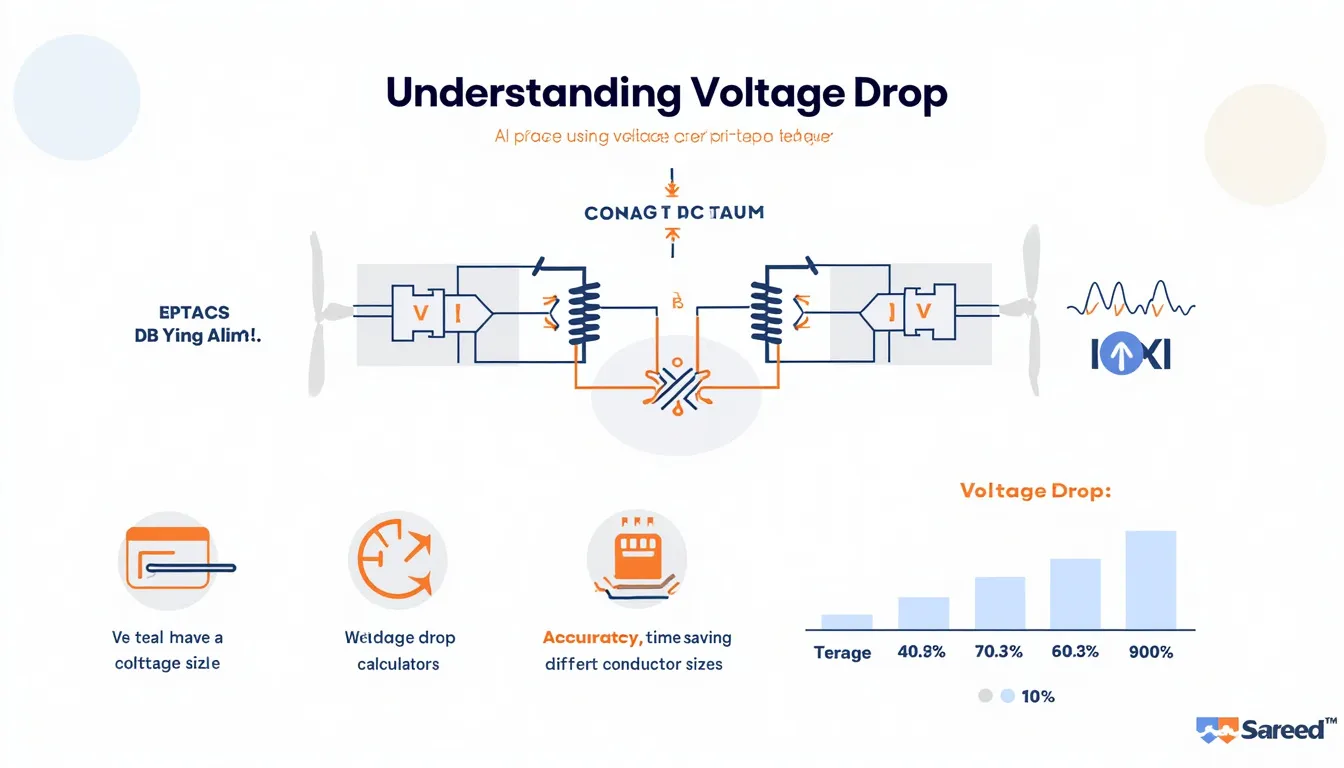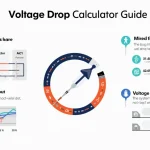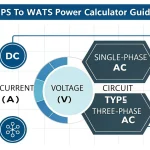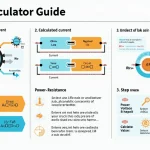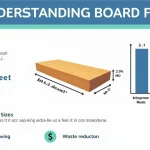Voltage Drop Calculator
Is this tool helpful?
How to use the tool
- Select measurement system
Metric for metres / mm² or Imperial for feet / AWG. Example inputs: 95 m (metric) or 340 ft (imperial). - Enter conductor length
The one-way run of the cable. Example inputs: 120 m or 425 ft. - Specify load current (A)
Total current carried by the conductor. Example inputs: 52 A or 18 A. - Input supply voltage (V)
Nominal system voltage. Example inputs: 208 V or 600 V. - Choose conductor material
Copper (lower resistance) or Aluminum (lighter, cheaper). - Select conductor size
Pick AWG or mm² based on code tables. - Indicate circuit type
Single-phase or Three-phase. - Press “Calculate”
The tool shows voltage drop, % drop, load voltage and a sizing recommendation.
Underlying formulas
For single-phase circuits:
$$ V_{drop}= \frac{2 K I L}{A} $$For three-phase circuits:
$$ V_{drop}= \frac{\sqrt{3}\, K I L}{A} $$- K – resistivity constant (12.9 Ω·cmil/ft copper, 21.2 Ω·cmil/ft aluminum).
- I – current (A)
- L – one-way length (ft or m)
- A – area (circular mils or mm²)
Example calculations
- Single-phase, copper, 10 AWG
I = 52 A, L = 310 ft, Vs = 208 V $$ V_{drop}= \frac{2(12.9)(52)(310)}{10380}=40.1\text{ V} $$ % drop = 40.1 / 208 × 100 = 19.3 % → oversize the wire. - Three-phase, aluminum, 1/0 AWG
I = 75 A, L = 180 ft, Vs = 480 V $$ V_{drop}= \frac{1.732(21.2)(75)(180)}{105600}=4.7\text{ V} $$ % drop = 0.98 % → acceptable.
Quick-Facts
- NEC recommends ≤ 3 % drop on branch circuits and ≤ 5 % overall feeders (NEC 210.19, 2023).
- Copper resistivity is 1.68 µΩ·cm; aluminum is 2.82 µΩ·cm (IEC 60228, 2018).
- “Voltage at the load shall not fall below 95 % of nominal under full load.” (IEEE Std 141, 2019).
- Copper traded at ≈ $8,400 / t Aug 2023 (LME Price Index).
- Temperature coefficient of resistance ≈ 0.00323 / °C for copper (IEC 60287-1-1, 2021).
FAQ
What is voltage drop?
Voltage drop is the reduction in electrical potential along a conductor caused by its resistance and the current it carries (IEEE Std 141, 2019).
When is voltage drop “too high”?
Designers hold branch-circuit drop to 3 % and total feeder + branch to 5 % to meet NEC informational notes (NEC 210.19, 2023).
Does the calculator work for DC circuits?
Yes. The single-phase equation applies to DC because reactance terms are negligible and the return path doubles the length.
How do temperature changes affect results?
Higher conductor temperature raises resistance approximately 0.4 % per 10 °C for copper (IEC 60287-1-1, 2021); adjust K or use correction tables.
Can I run cables in parallel?
Running two identical conductors halves resistance because total area doubles; input the combined mm² or select the next larger AWG.
Why choose aluminum over copper?
Aluminum costs ~60 % less per amp-ampacity but needs a size two AWG larger to match copper’s resistance (USDOE Copper Report, 2022).
How can I reduce voltage drop without upsizing?
Shorten cable runs, increase supply voltage taps, or redistribute loads across phases to cut current on any single conductor.
Is harmonic distortion considered?
The tool assumes purely resistive conductors; high harmonics raise RMS current and real-world drop—verify with power-quality meters (IEEE 519, 2022).
Important Disclaimer
The calculations, results, and content provided by our tools are not guaranteed to be accurate, complete, or reliable. Users are responsible for verifying and interpreting the results. Our content and tools may contain errors, biases, or inconsistencies. We reserve the right to save inputs and outputs from our tools for the purposes of error debugging, bias identification, and performance improvement. External companies providing AI models used in our tools may also save and process data in accordance with their own policies. By using our tools, you consent to this data collection and processing. We reserve the right to limit the usage of our tools based on current usability factors. By using our tools, you acknowledge that you have read, understood, and agreed to this disclaimer. You accept the inherent risks and limitations associated with the use of our tools and services.
